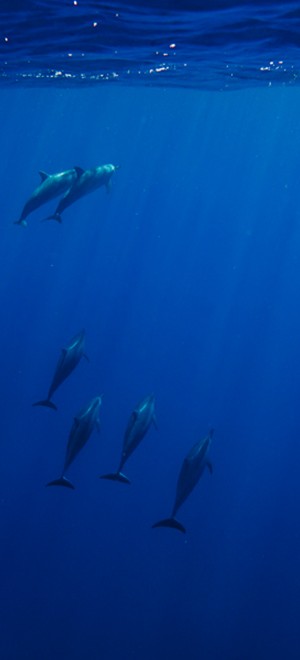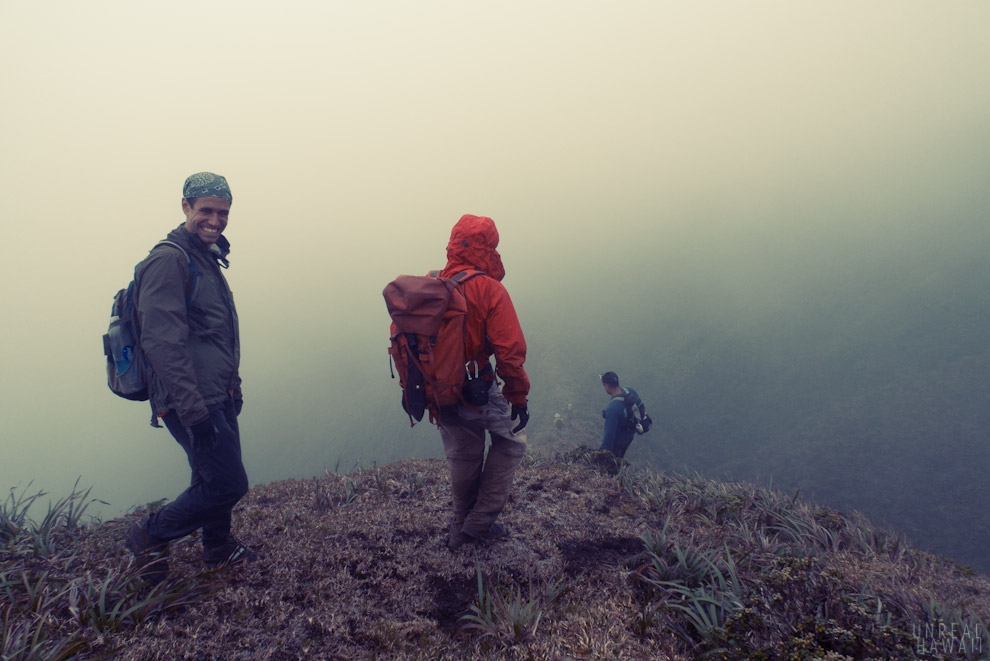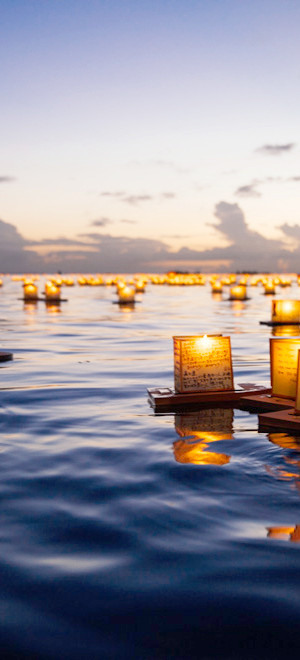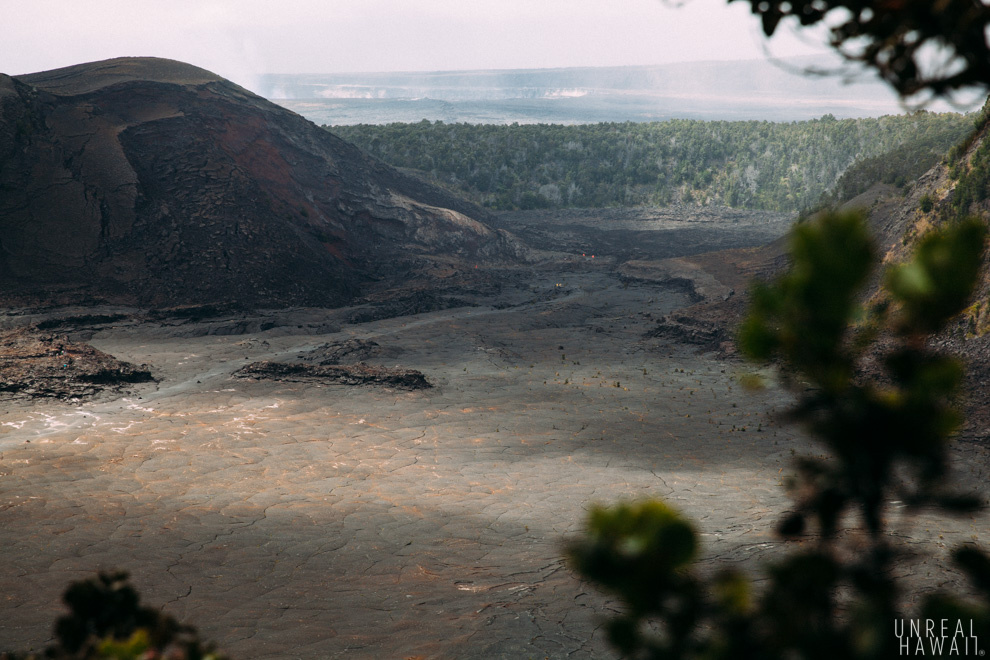
Hike the Kilauea Iki Trail.

Eat at the Volcano House.
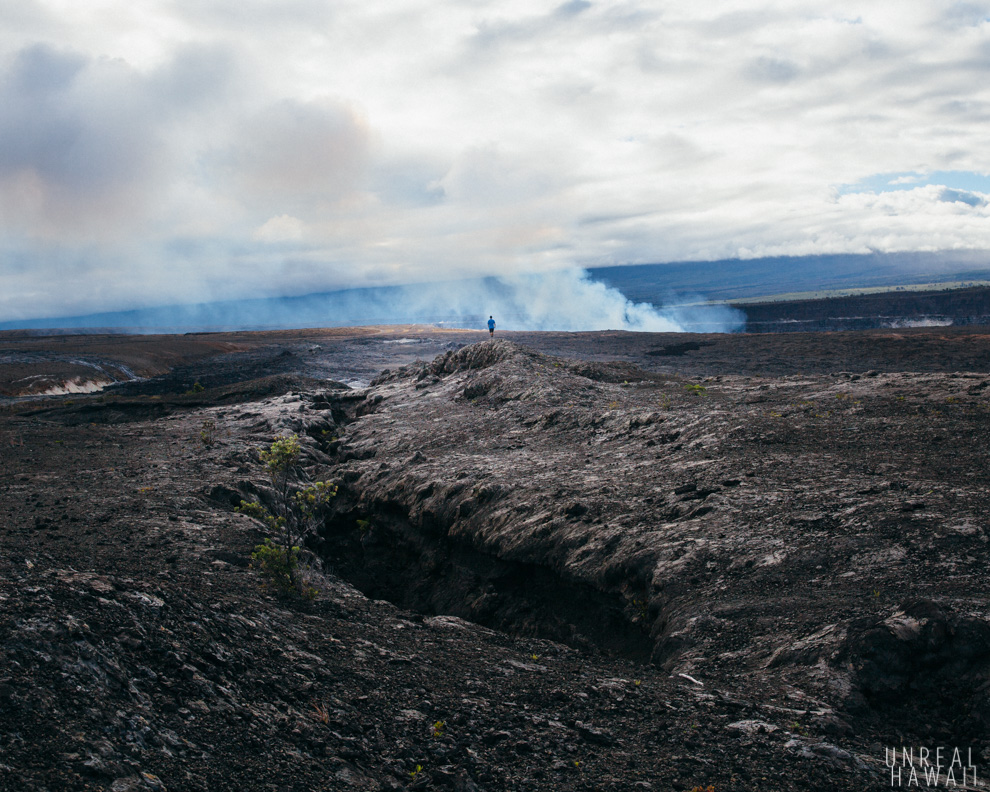
Walk to the Keanakakako’i Lookout.
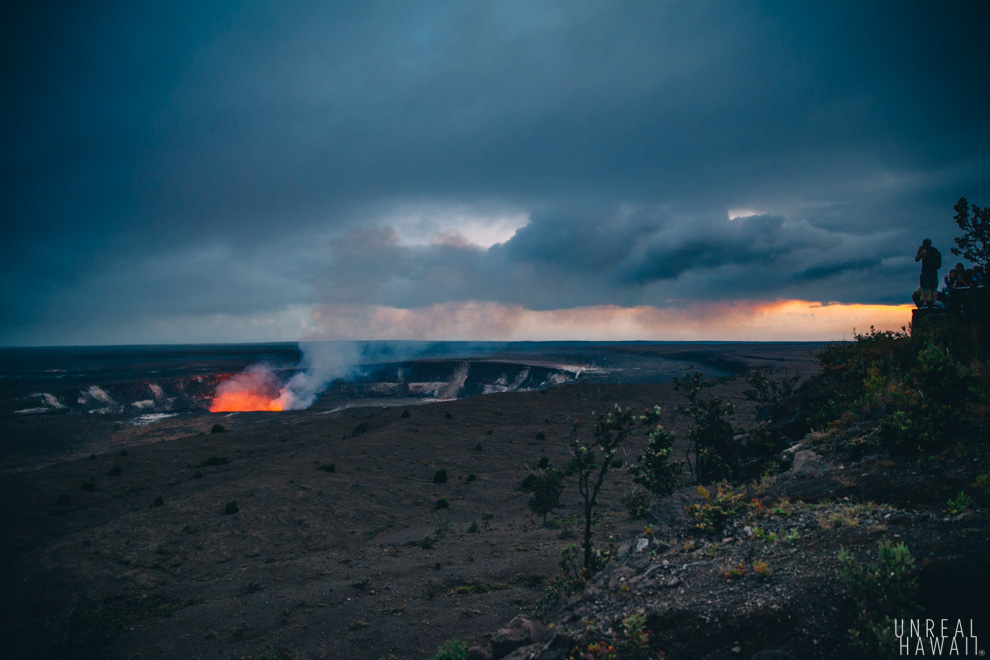
Catch the glow of Halemaumau crater from the Jagger Museum.
These are some highlights from a day at Volcanoes National Park on the Big Island of Hawaii.
There are two national parks in Hawaii, Haleakala National Park on Maui and Volcano National Park on Hawaii’s Big Island. When the National Parks Service takes over a piece of land, you know there’s something special about it and it’s probably worth a visit. Volcanoes National Park offers a truly “only in Hawaii” experience. And if you like taking photos like I do, you’ll have fun here.
This story will give you an idea of what you can do if you only have one day to visit the park.
First though, here’s some background info that might help you understand the park. The “volcanoes” in question here are Mauna Loa (the huge mountain that makes up almost half of the Big Island) and Kilauea volcano (the smaller volcano that sits at the south side of Mauna Loa). Kilauea is the main feature here. The Kilauea volcano is currently erupting but it’s not like lava is spurting out of the top of it like you see in the movies. Lava is flowing out of the volcano miles away from where you’ll be. It kind of just leaks out of the volcano if you will. There’s also lava in a pit crater near the summit of the volcano called Halemaumau crater. It doesn’t flow out of the crater though. It just sort of gurgles inside the crater like a gurgling lake of lava. At night you can see the glow of the lava lake. Scattered about Volcanoes National Park are a bunch of smaller craters. At one point in time these were lava lakes as well but they are now “dried up” and safe to hike around. Here’s what’s currently going on with the volcano.

We stayed in Hilo at the Hilo Hawaiian Hotel. Volcanos National Park is just a 45 minute drive from Hilo (it’s about 2.5 hours from Kona). We grabbed coffee and breakfast at Starbucks before heading out. We arrived at the park around 11am.
This first thing you want to do is drop by the KÄ«lauea Visitor Center and use the maps to orient yourself with the park. You won’t have to drive very far but it’s good to get a feel for where everything is.
Then you can make your way to the Kilauea Iki trailhead for super nice hike.
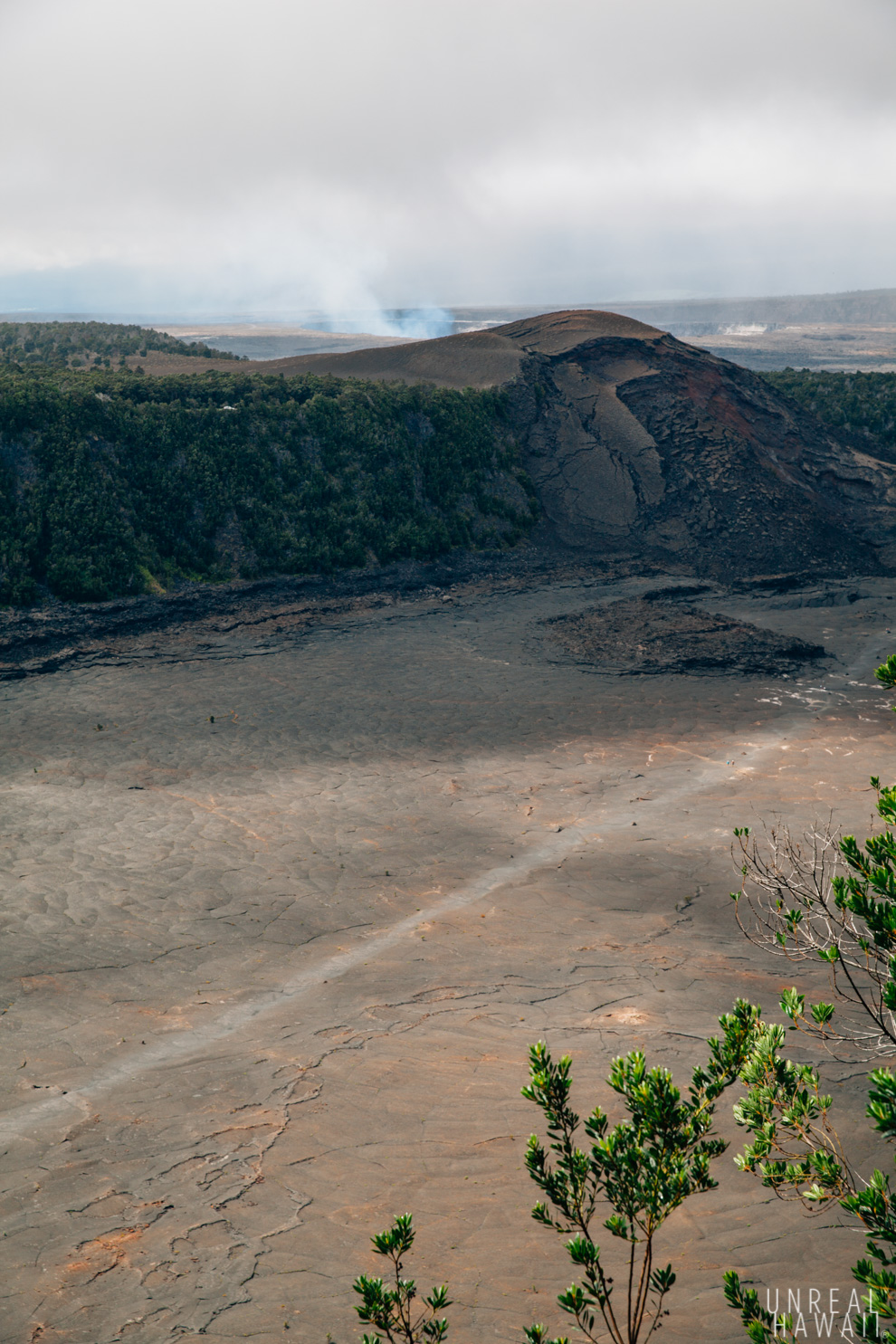
The trail spans the floor of the Kilauea Iki crater.
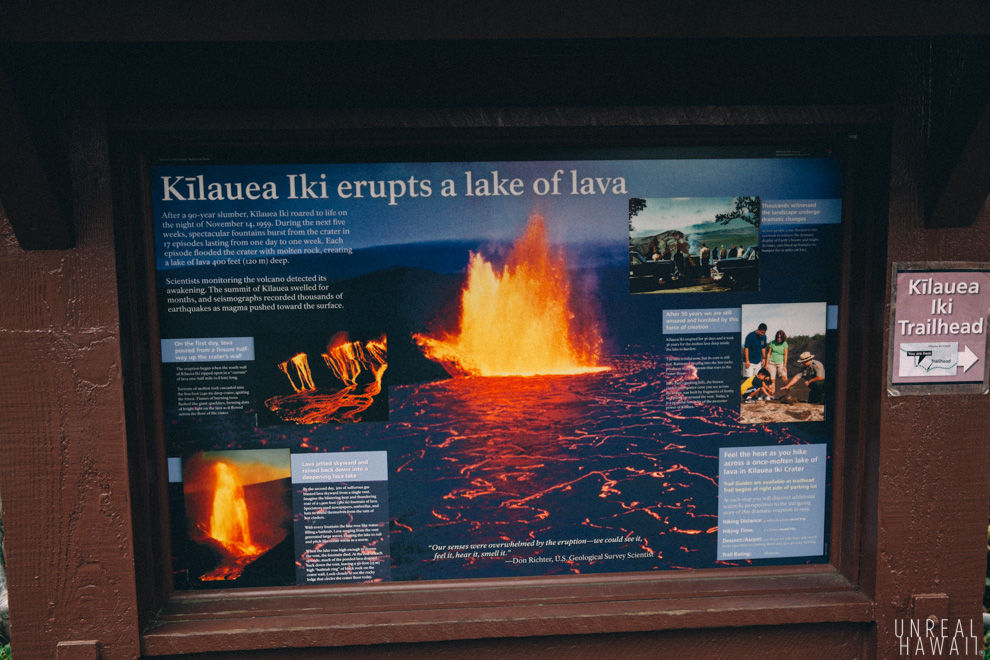
The latest eruption in the crater was back in 1959 when the crater turned into a lake of lava. Certain spots along the crater floor are still warm to the touch and steam vents are all over the place. It’s an easy hike but you should come prepared with some water, solid shoes and a rain jacket. I’d bring a rain jacket even if it looks sunny out as the weather changes constantly.
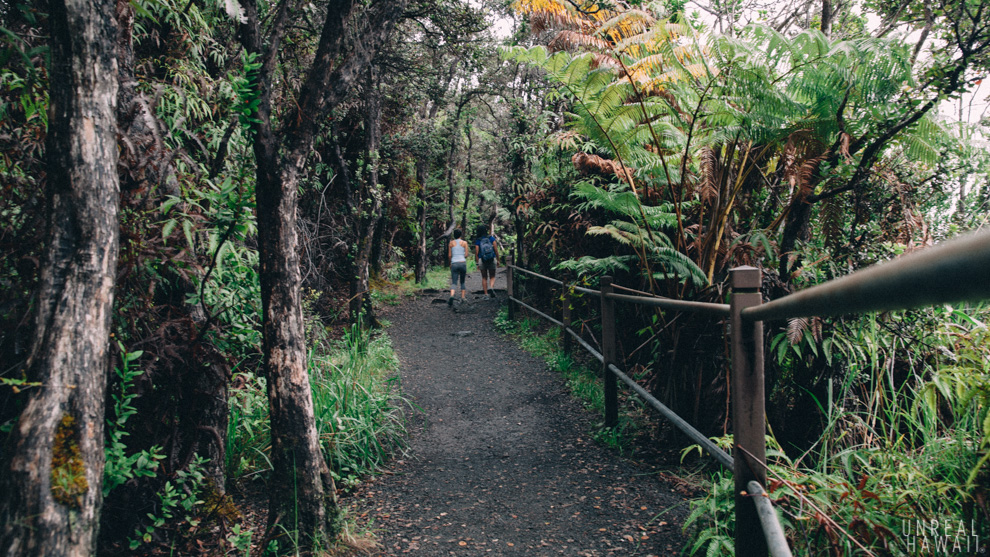
The hike starts at the top of the crater. On this day I was hiking with Christina and Carrie. It’s really easy to find using the visitor map they give you when you pay to enter the park. There’s a parking lot right at the trailhead too.
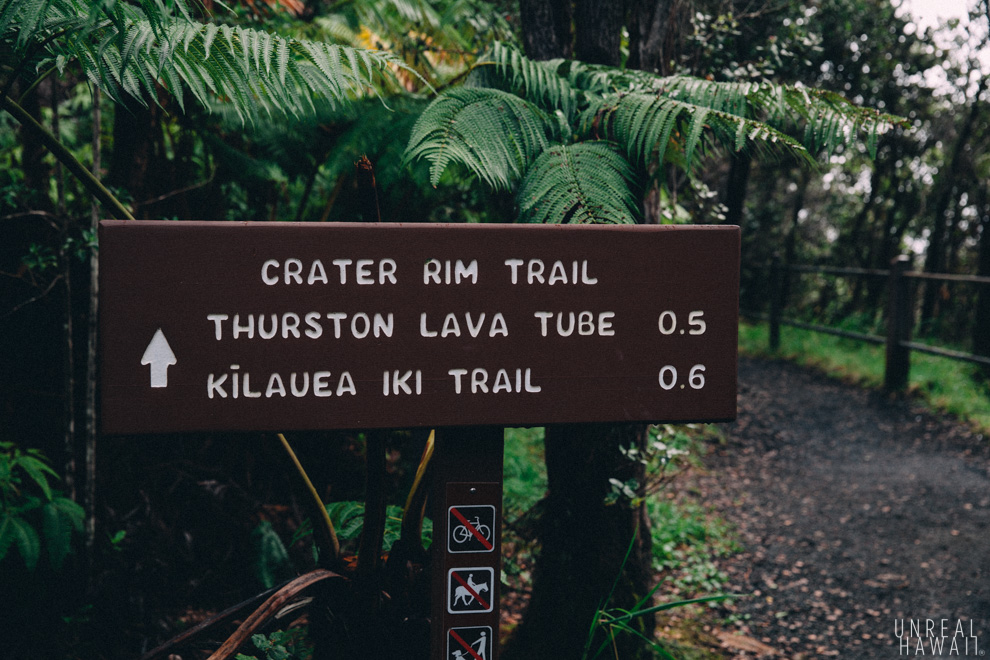
If you follow the signs you’ll eventually come to the trailhead. The signs might be confusing because you can start the trail at either side of the crater so there are really two trailheads. Just pick whichever one you like as you’ll end up back at your car either way.
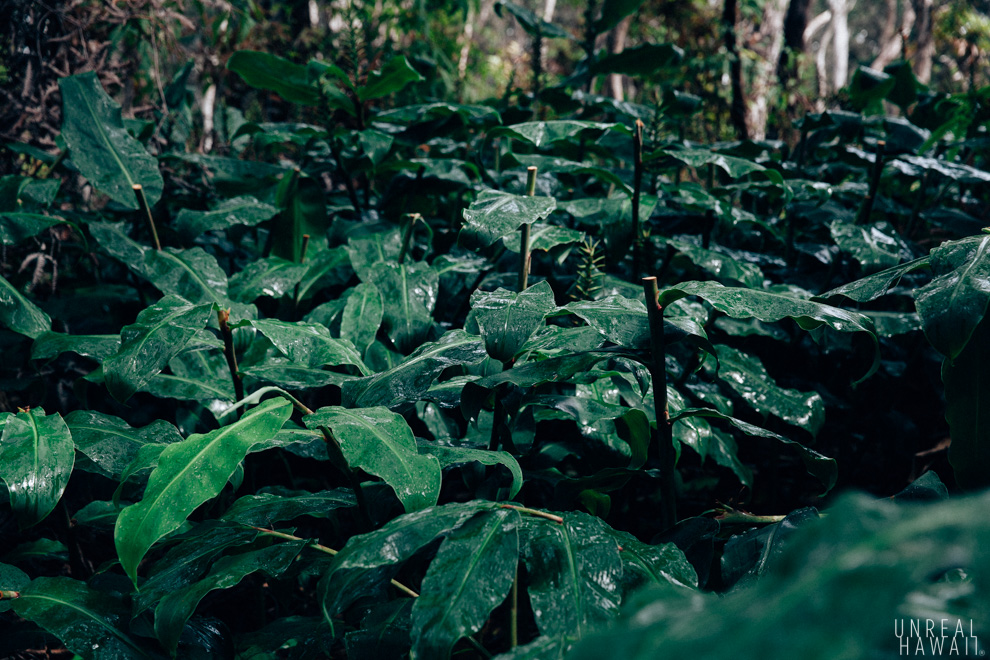
The area at the top of the crater is lush.
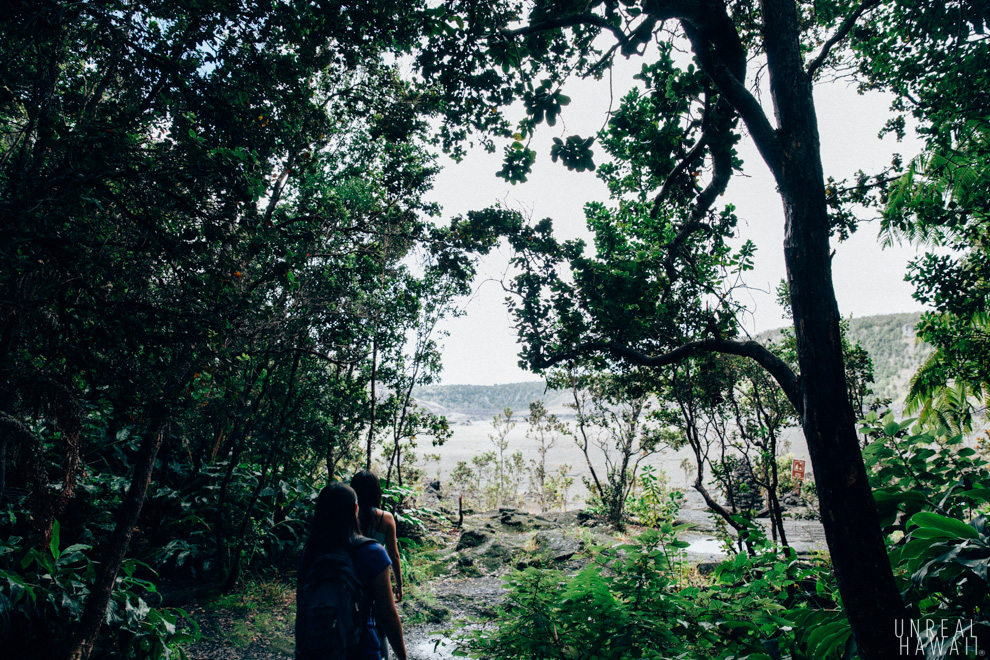
Once you hike to the bottom of the crater, you’re in a different world.
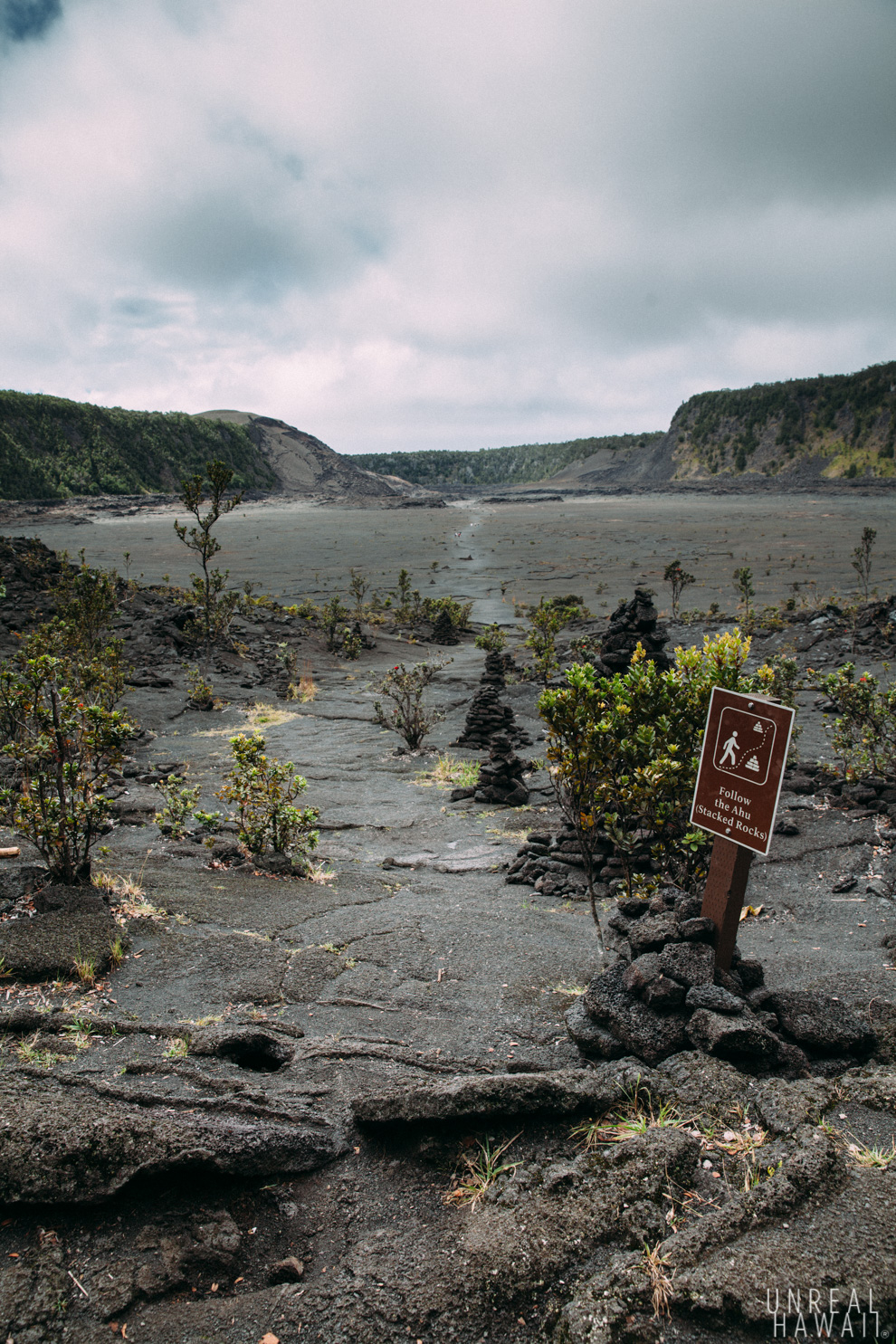
You can’t really get lost in the crater but I think it’s best to stay on the path so you don’t fall into a random hole or fissure of some sort.
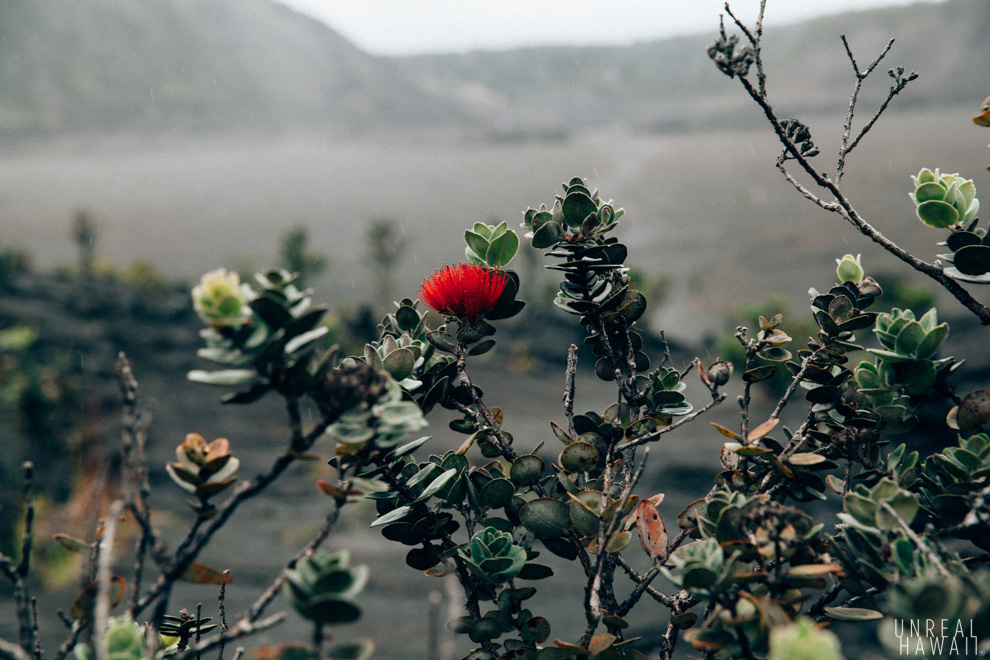
These ‘ÅŒhi’a Lehua are some of the first plants that grow out of lava rock. It’s said that picking the lehua flower will cause it to rain. Someone must have picked one right when we hit the trail.
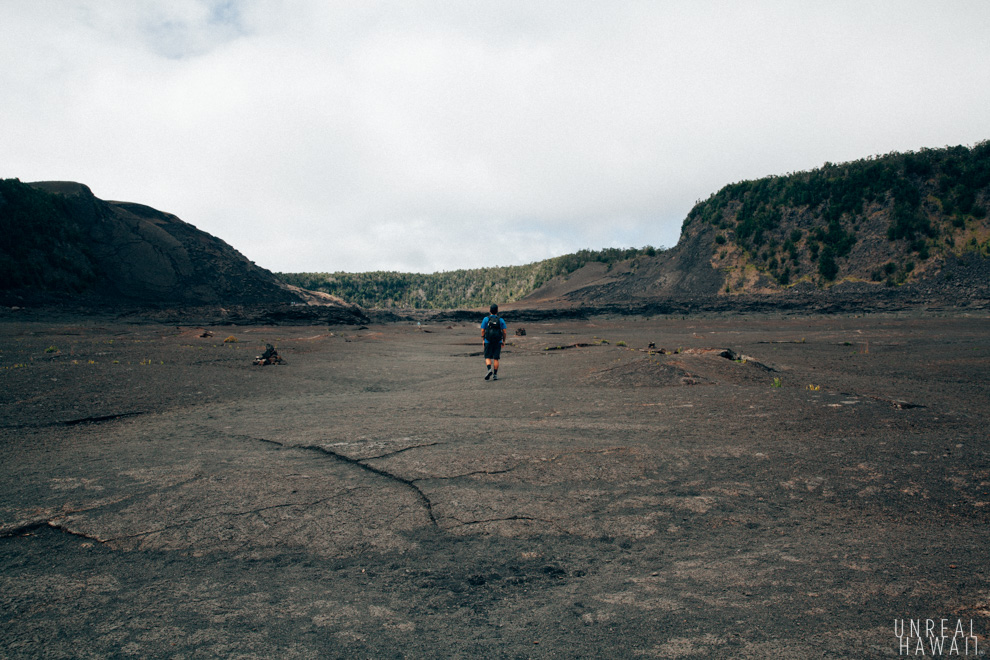
I know it doesn’t seem that exciting to just walk across the bottom of a barren crater but there’s an energy in here. You are surrounded by new earth, steam vents can be seen all around you and certain spots on the ground are warm to the touch.
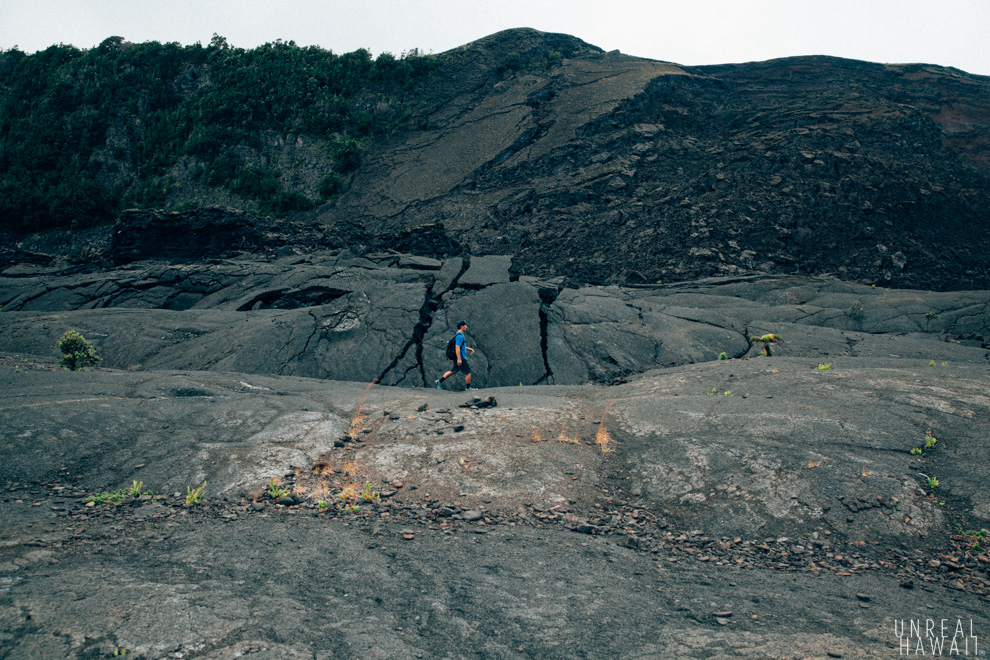
Visions of beautiful destruction abound.
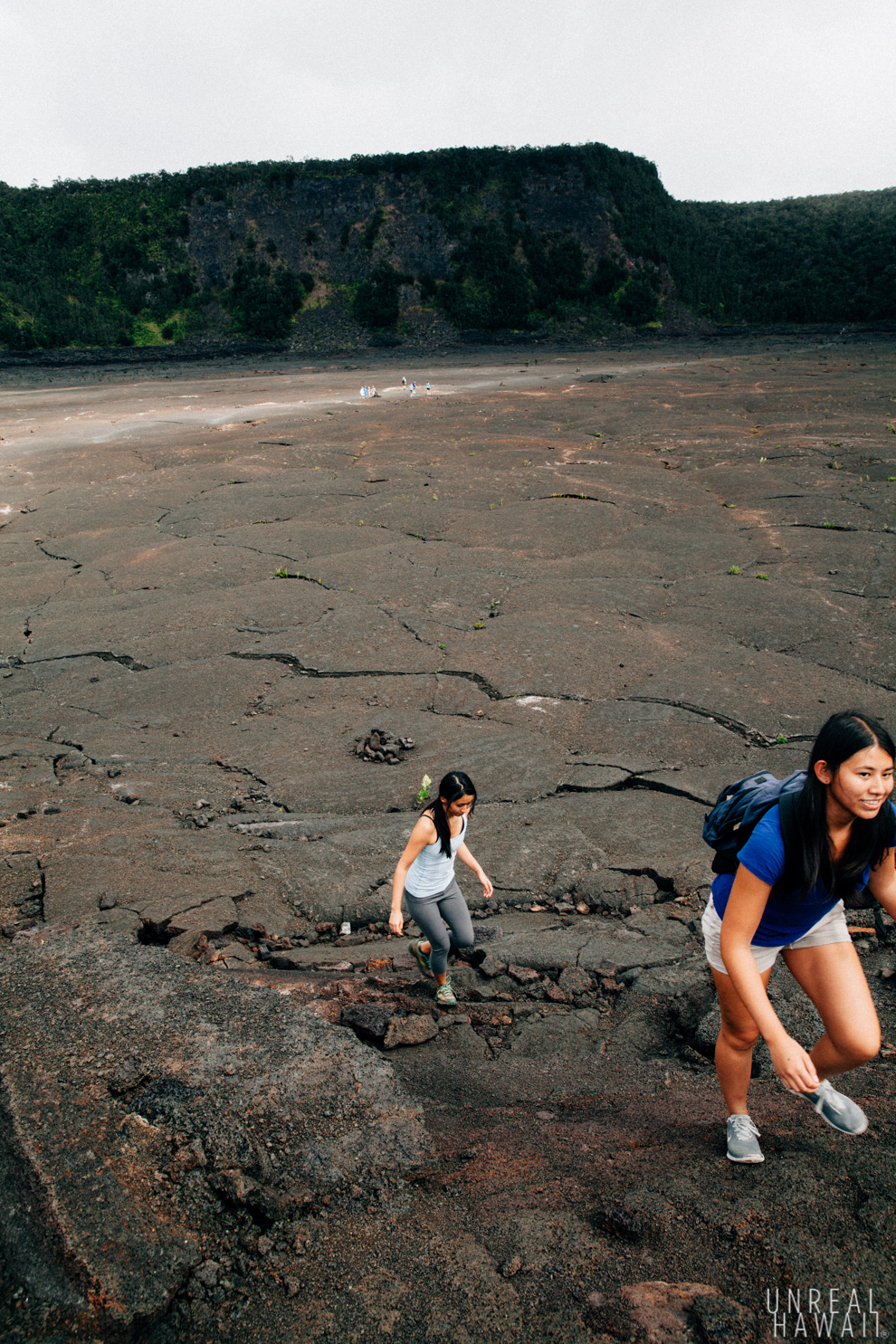
To get the most out of this hike you need to explore your surroundings. If you set off to simply get from point A to point B as quickly as possible, you might find the experience underwhelming.

Take your time and think about how much force it takes to create these giant fissures in the rock.
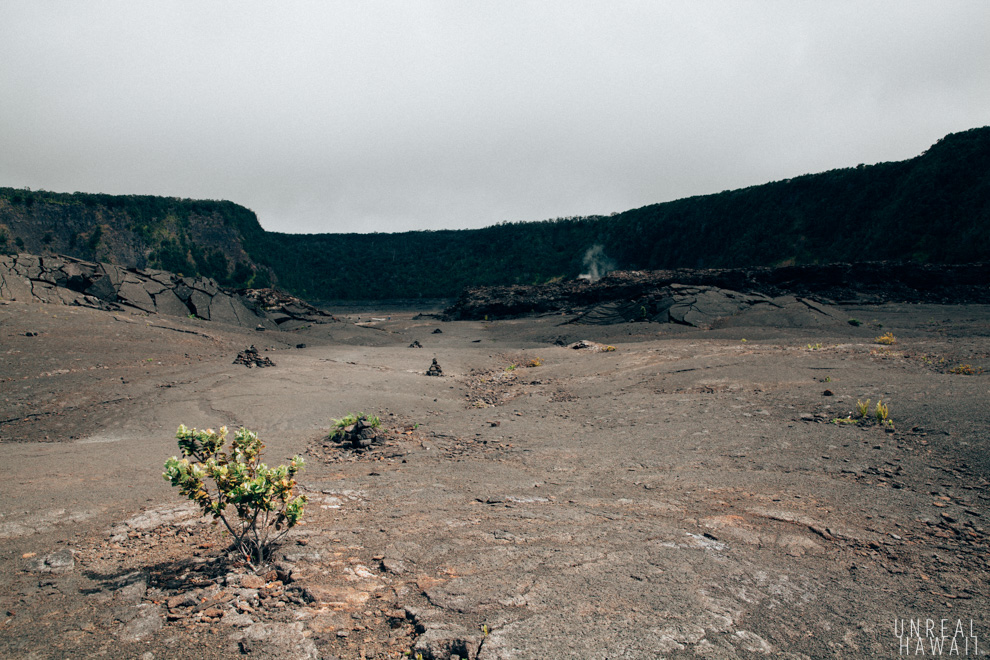
It amazes me to see life sprout out of something that was once flowing lava.
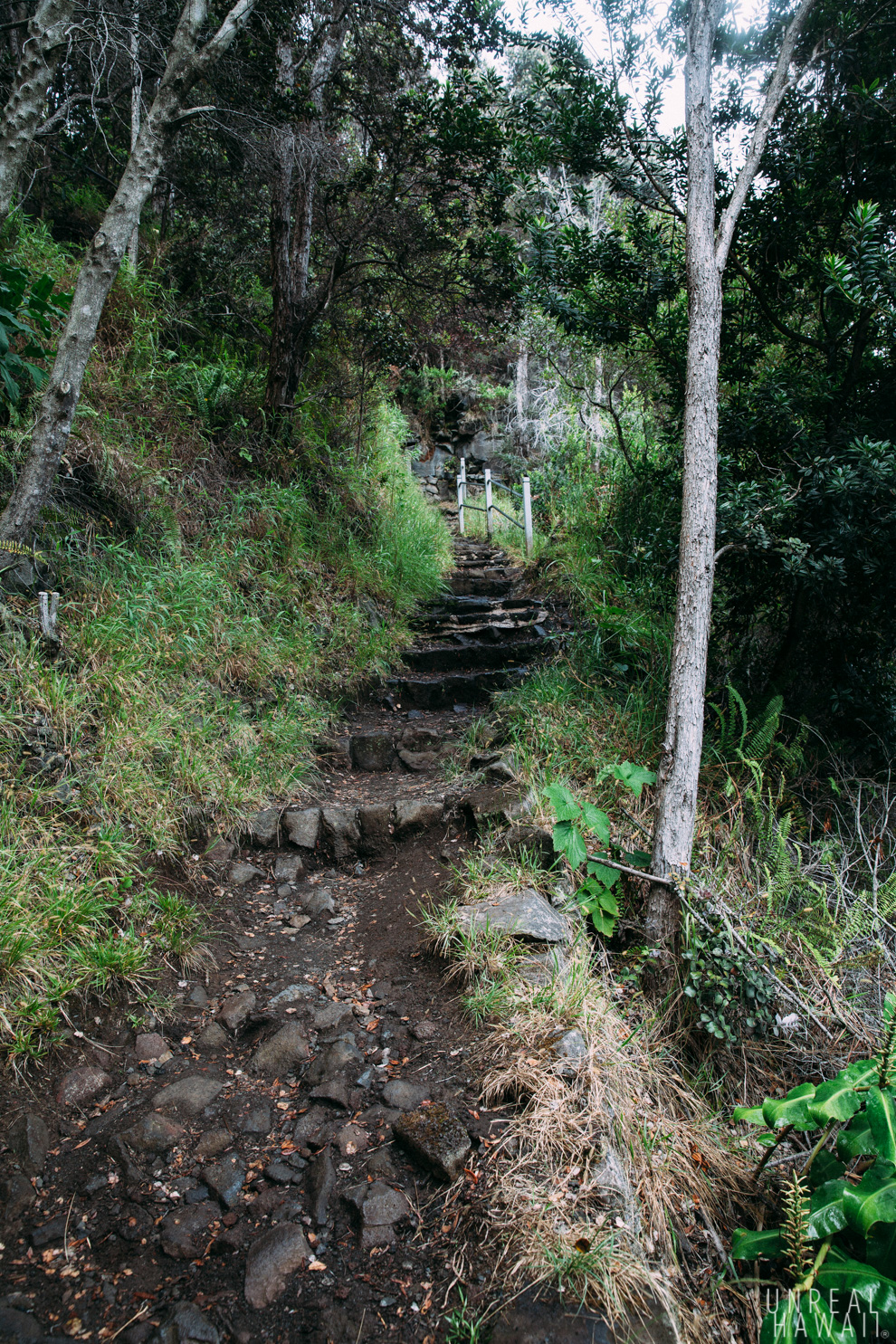
Once you reach the other side of the crater, you’ll hike back up to the trail at the top. That trail will take you back to your car.
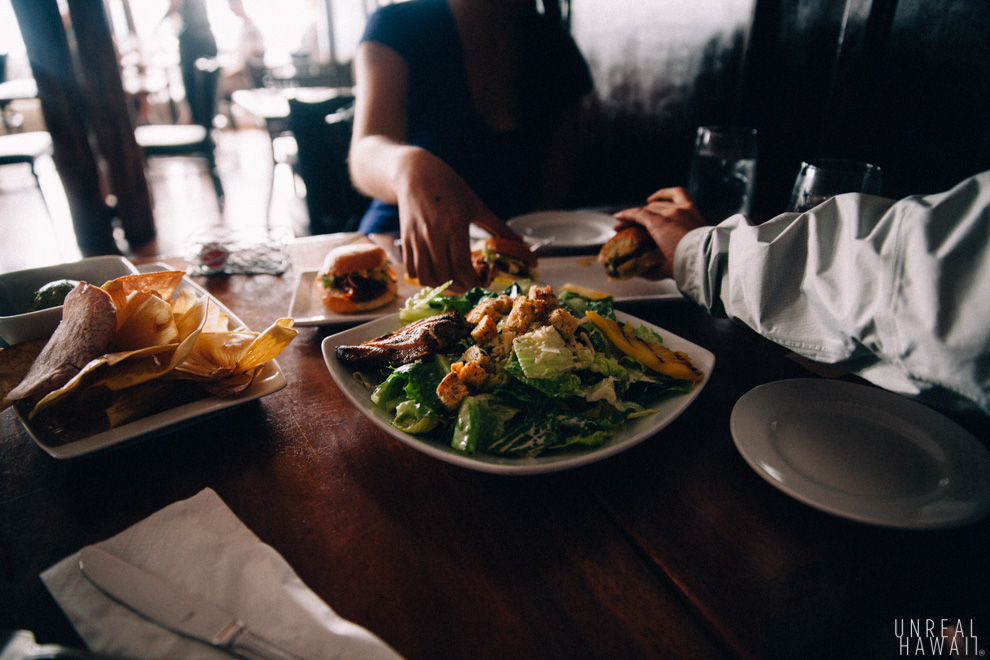
When your done with your hike, you might be looking for a snack. The Volcano House is a good option. It’s right across the street from the Volcano National Park Visitor Center and the food is on point. The Volcano House is a hotel inside the park for people who are looking to explore the park over a couple days. There are actually two restaurants there but only one of them is open for lunch. I’d recommend eating a late lunch to avoid crowds.
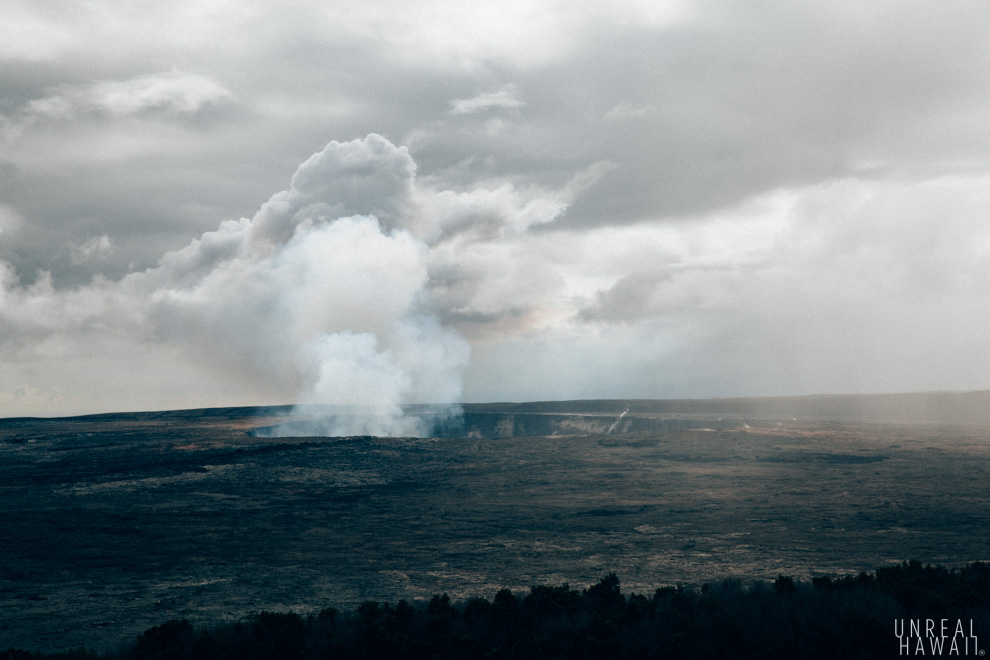
This is the view from the patio at Volcano House. It offers a superb view of the famous Halemaumau Crater, the main “pit crater” of the Kilauea Volcano.
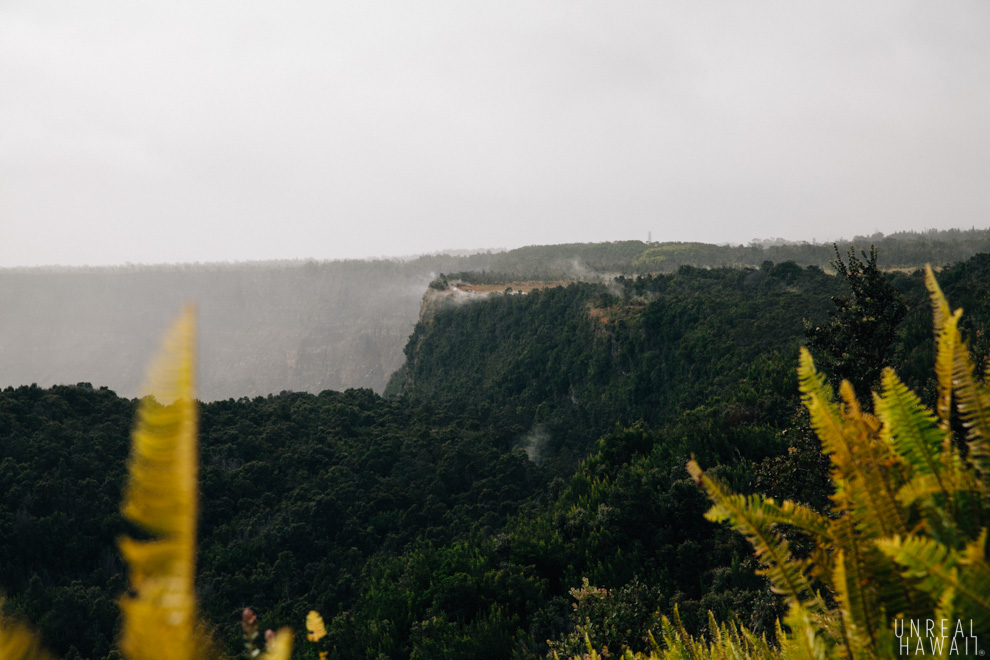
Looking to the right you can see the steam vents along the rim of the Kilauea volcano. It’s possible to drive over there to get a closer look. We didn’t check them out on this trip but if you wanted to you would probably have time to fit in a drive over there into your day at the park.
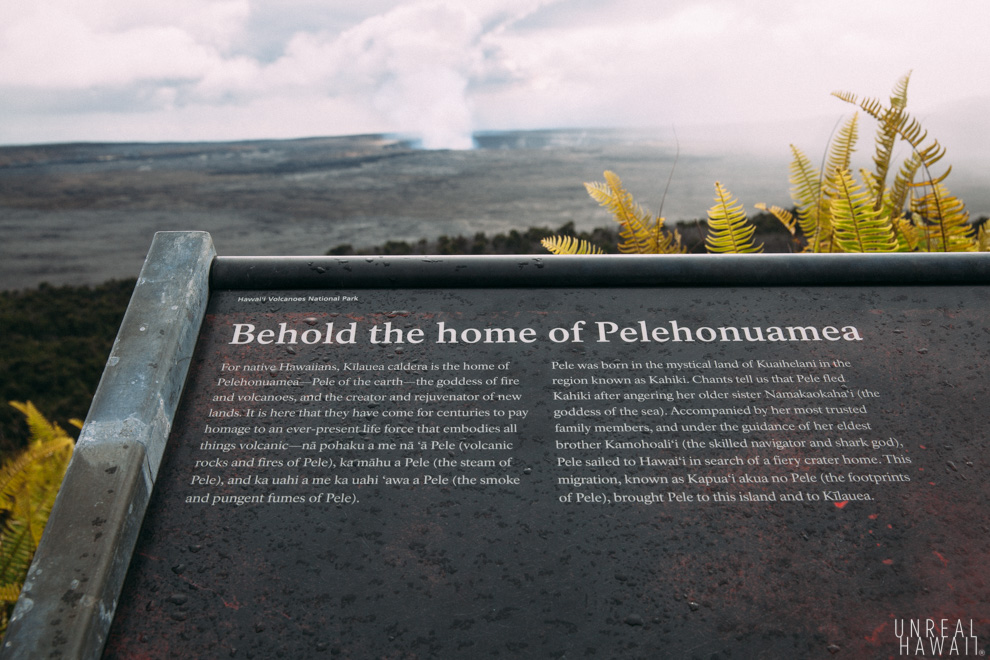
The Kilauea volcano is home to the goddess Pele.
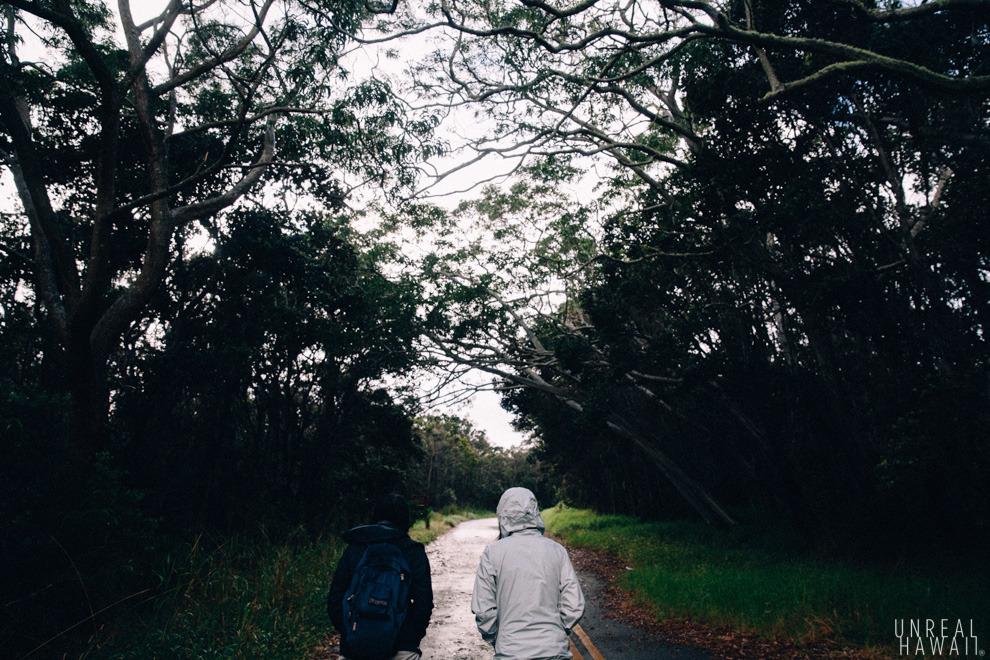
After lunch, we made our way down to Keanakakoʻi Crater. You drive down Chain of Craters road until it you see a road block. Then you park and walk the road. (Much of this road at Volcanos National Park was closed due to toxic gases but this small section was reopened to foot traffic back in 2012.)
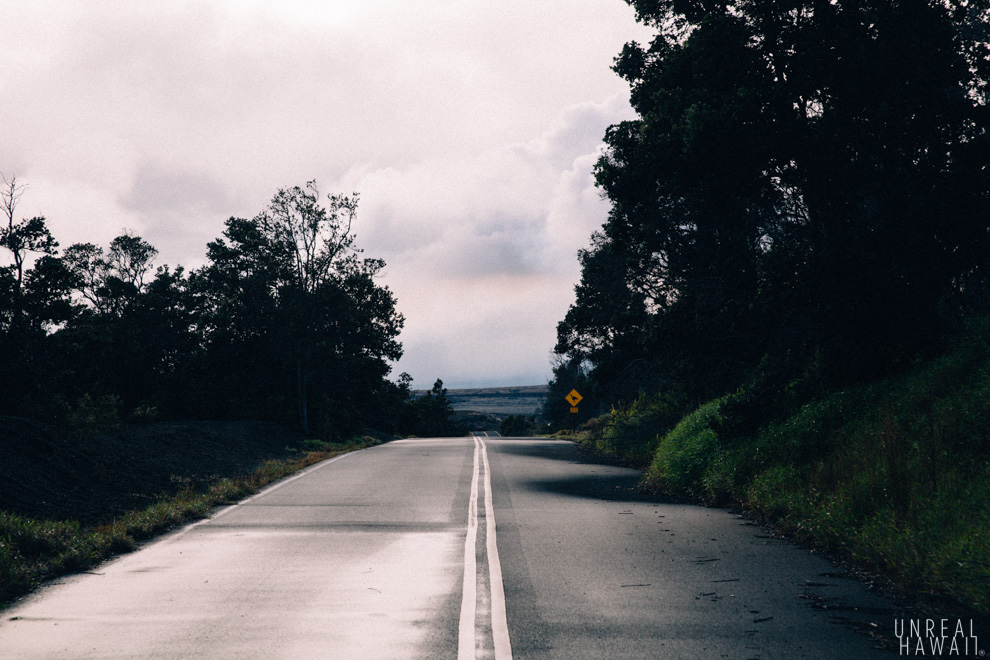
You can walk down the road for .8 miles and then you’ll see another road block at which point you are supposed to stop walking.
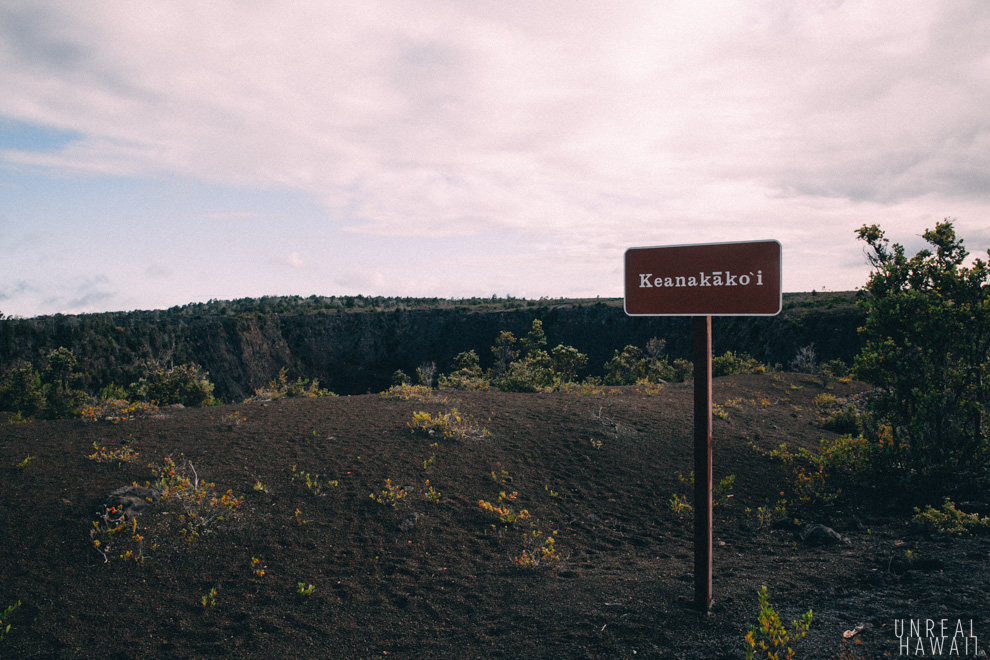
Before the road block though you’ll get to see Keanakako’i crater.
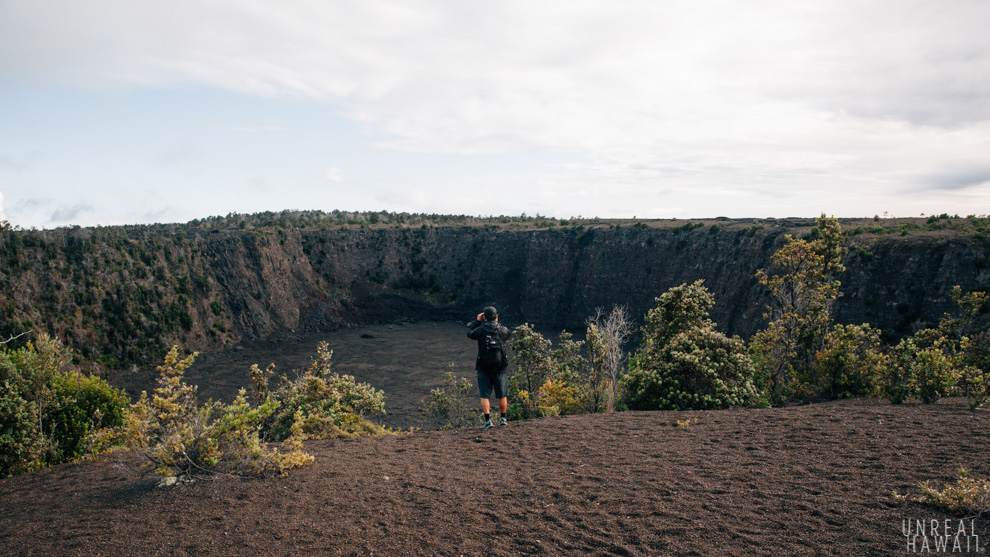
It’s a small pit crater.

Here’s some info about Keanakako’i crater.
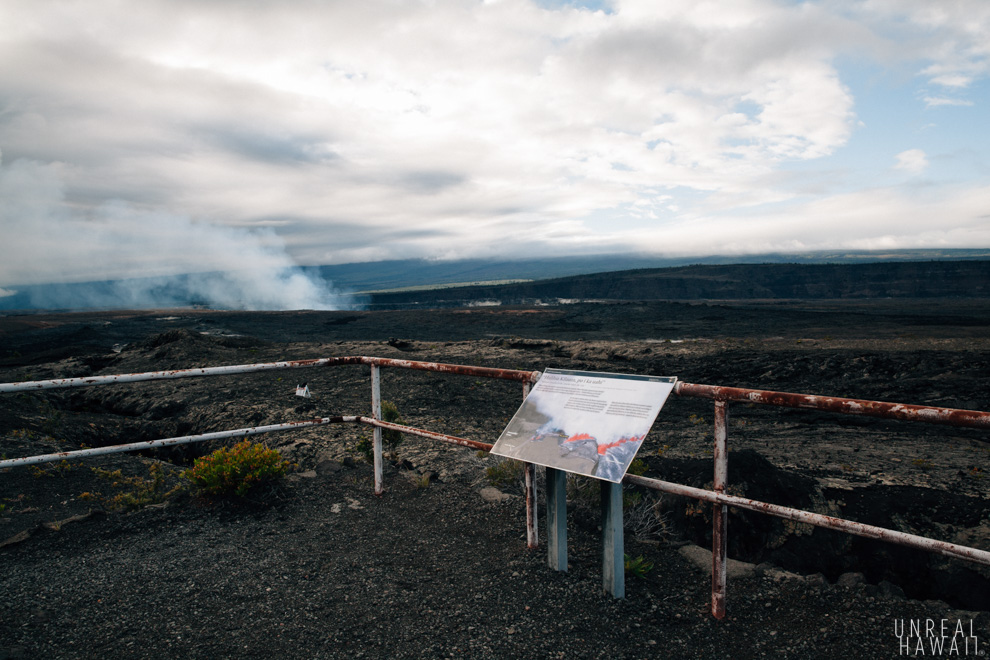
What’s really cool about this spot is that on the other side of the road from Keanakako’i crater is this lookout.

You get a panoramic view of the Kilauea caldera from this point. The view starts with Halemaumau on the left.

You get a sense of how big the caldera is from here.

From here, you’re looking back at the Volcano House.

The terrain here is wild.

The various textures serve as eye-candy.
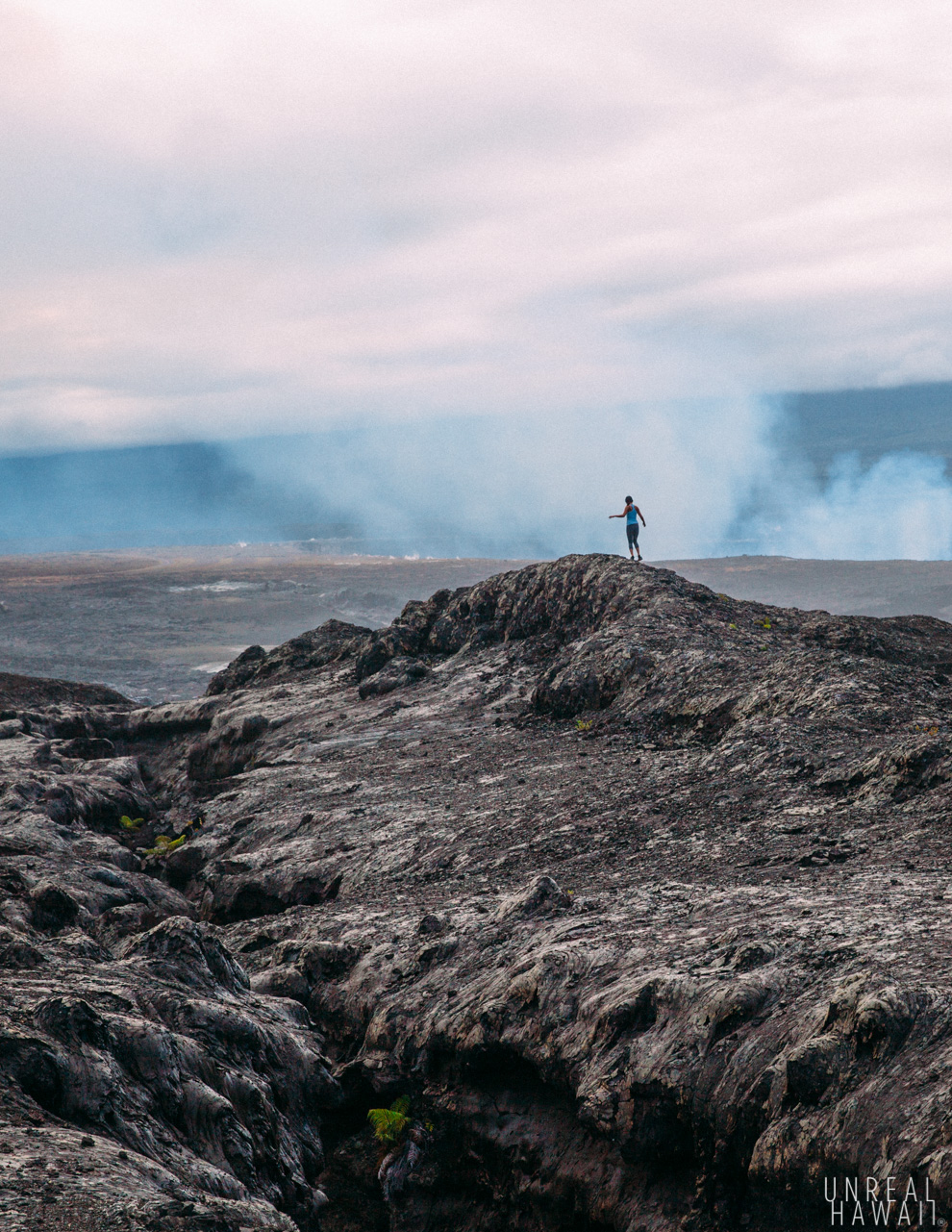
We looked around a bit but didn’t linger long. We had to get back to higher ground to see the glow of Halemaumau crater as dusk approached.

From Keanakako’i crater, you simply walk back up the road you came in on to get to your car.
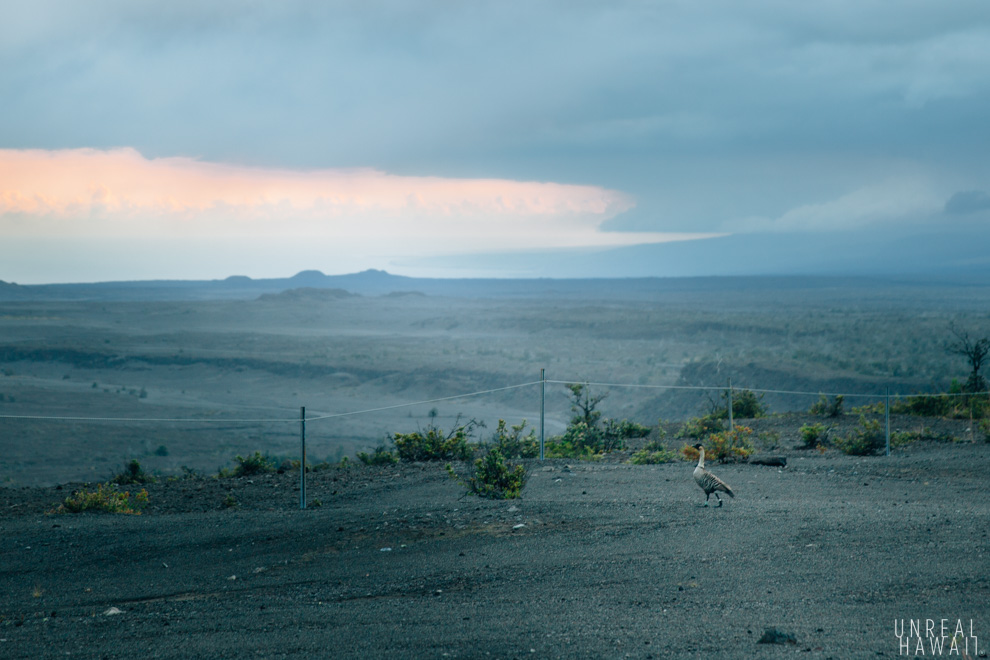
Our final stop for our visit was the Jagger Museum. Here we saw a nene waddling along.
It gets really cold at the Jagger Museum at night by the way. You’ll really want a jacket, trust me.
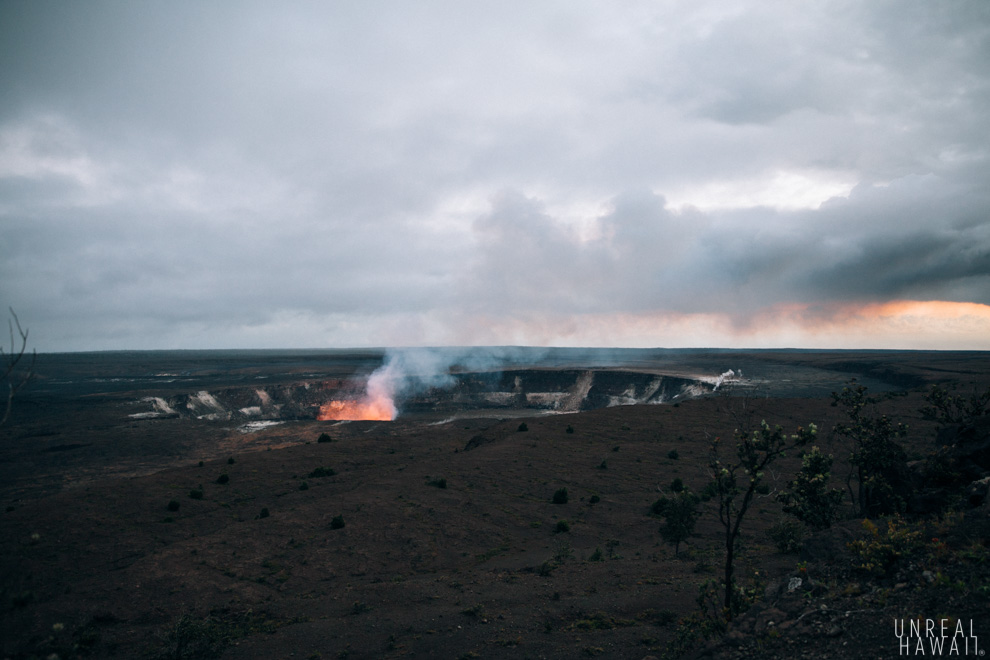
But we didn’t come to bird watch. We came to see this.
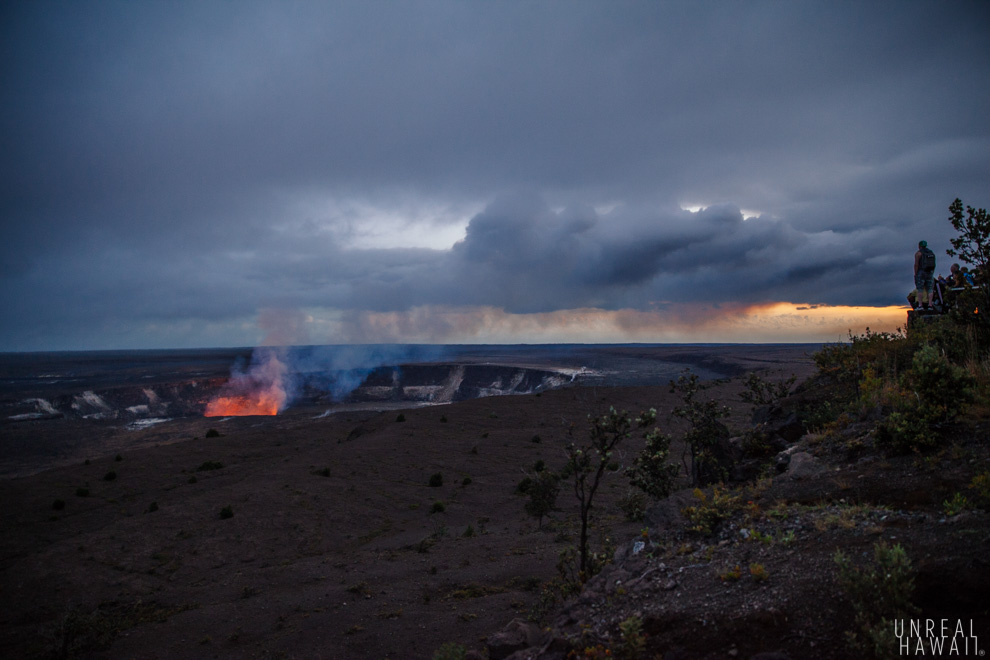
As the light of day fades away, the glow from the lava lake inside Halemaumau crater becomes visible.
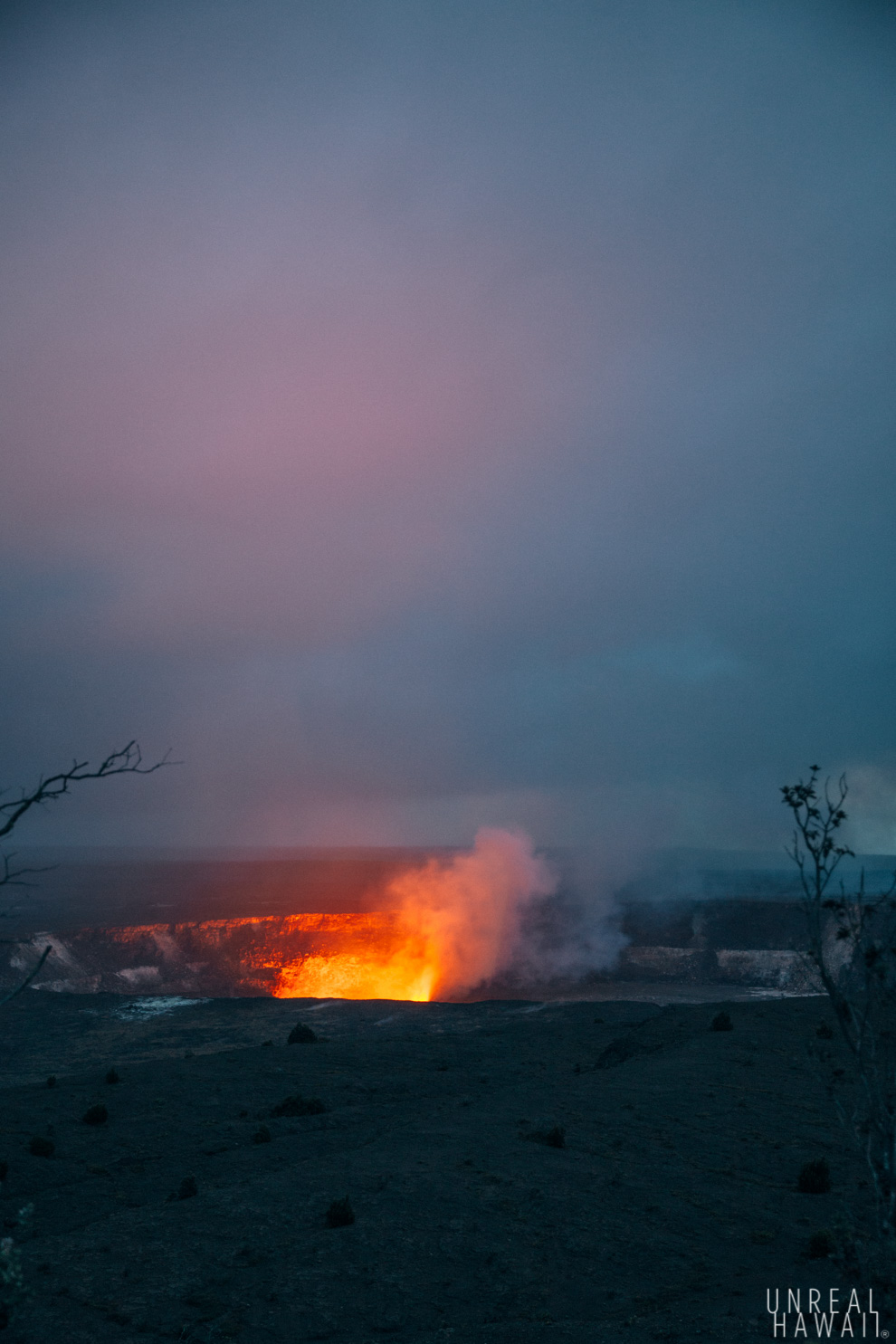
The darker it gets, the stronger the glow.
The intensity of the glow changes everyday. It all depends on how much lava is “gurgling” inside the crater.
Once night fell, the rain came back and it was cold. We decided to drive back to Hilo for dinner.
This was just one day at Volcanoes National Park. And we got off to a late start. There’s way more you can do here. If you intend on spending more time at the park you can see the full list of sights on the Hawaii Volcanoes National Park official website.
See also:
- Lava used to flow from Kilauea to the ocean. See story:Â Hawaii Lava Hike
- Some dramatic views for Halemaumau can be found in this feature on a Hilo-based photographer: The Photography of Andrew Richard Hara
- Hawaii Volcanoes National Park on GoHawaii.com.
- Hawaii Volcanoes National Park on Trip Advisor.
- A very nice list of hikes at Hawaii Volcanoes National Park on BigIslandHikes.com.
– All photos by David Chatsuthiphan.Â


